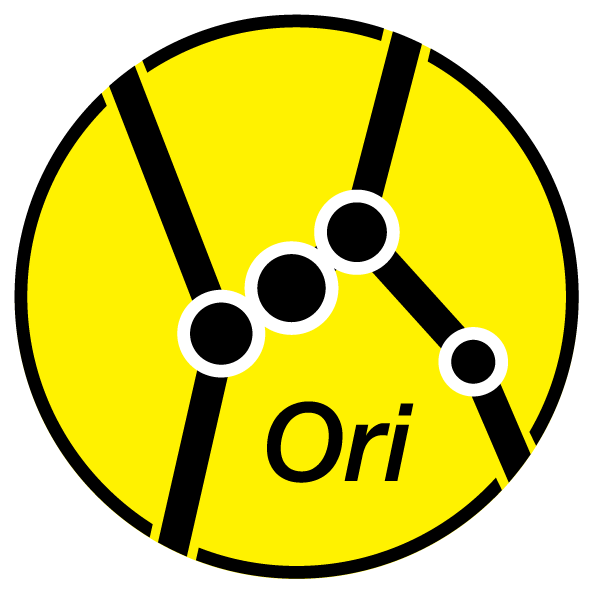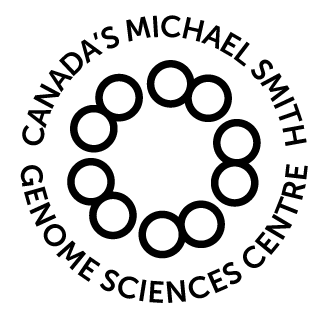There is no sound in space, but there is music (and genomes)
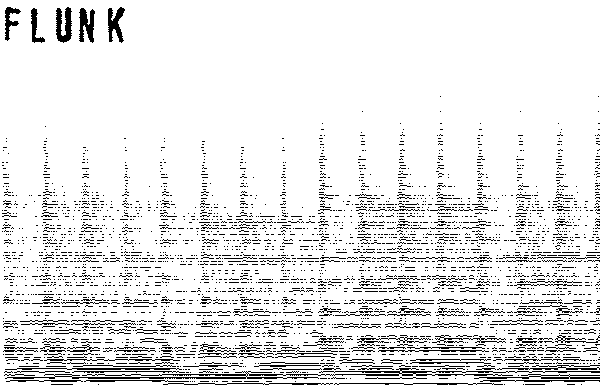
contents
Here I show the decoding instructions that appear on the first disc. These took forever to make, were a lot of fun to make, and might require a full alien civilization to decode.

The instructions begin with an important announcement "Hello people read this!" followed by Huffman-encoded Nuremberg Code and Declaration of Helsinki. I explain how to decode the Huffman encoding.
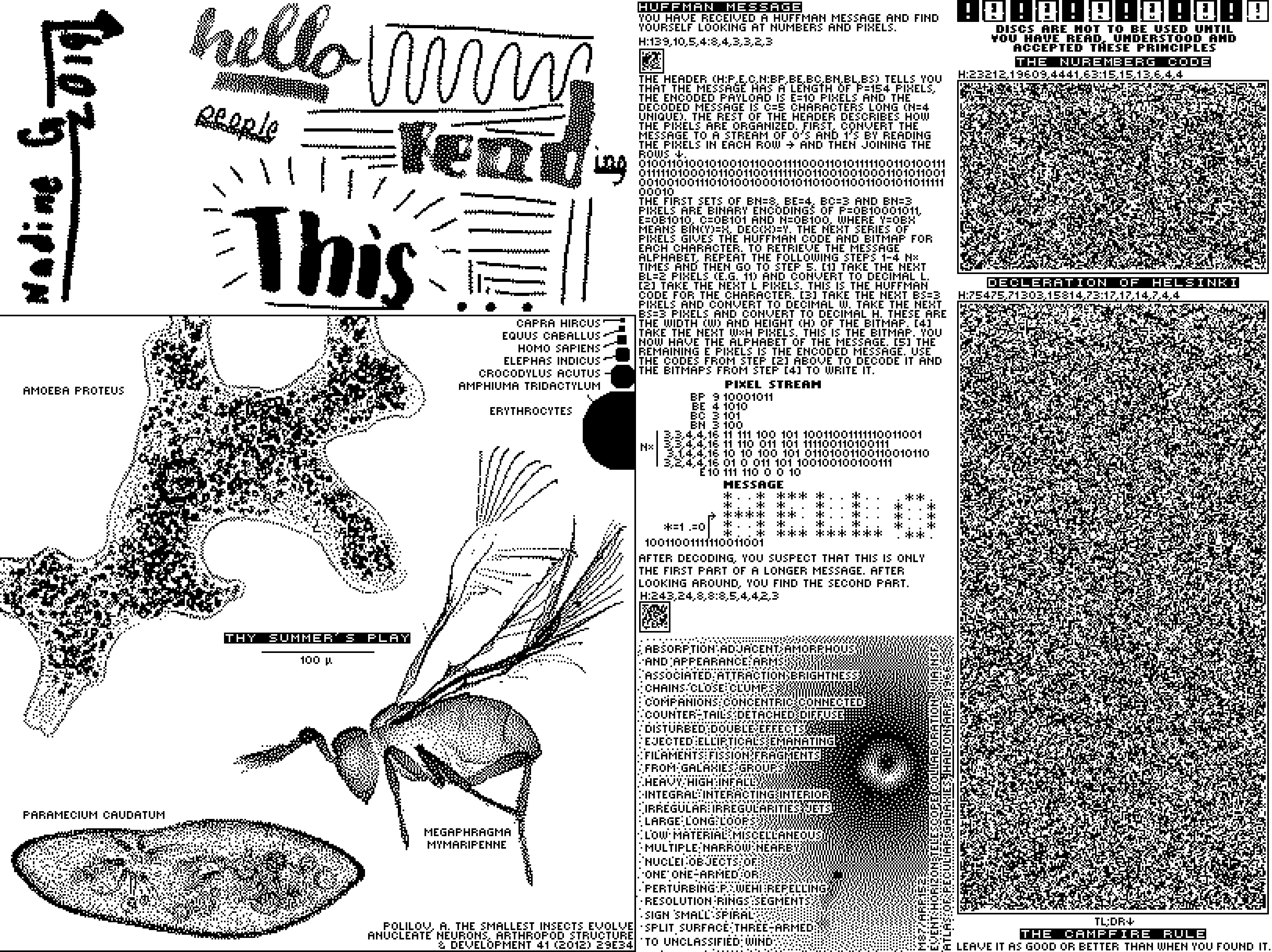
There's lots of art and graphical notions on the discs. Here you see an amoeba and fairyfly — drawn at physical scale on the discs. Each pixel on the disc is 1.4 microns, so 100 microns is about 70 pixels. The images shown here are magnified for easier reading.
You also see a short space poem created out of an alphabetically ordered triplets of classification terms from the Atlas of Peculiar Galaxies. “To unclassified wind!”
absorption adjacent amorphous and appearance arm associated attraction brightness chains close clumps companions concentric connected counter-tail detached diffuse disturbed double effects ejected ellipticals emanating filaments fission fragments from galaxies groups heavy high infall integral interacting interior irregular irregularities jets large long loops low material miscellaneous multiple narrow nearby nuclei objects of one one-armed or perturbing pōwehi repelling resolution rings segments sign small spiral split surface three-armed to unclassified wind
Once we have the EULA out of the way, let's get into it.
The first instruction panel begins with a piece of Alan Watts' It Starts Now, dedicated to our last universal common ancestor (LUCA). “You are this universe...”
We see the tree of life (I apologize for the millions of sparks of life that aren't listed) and you're taken along the branching all the way to us, into our cells and into the bases of our DNA that are on the discs. It's quite a trip.
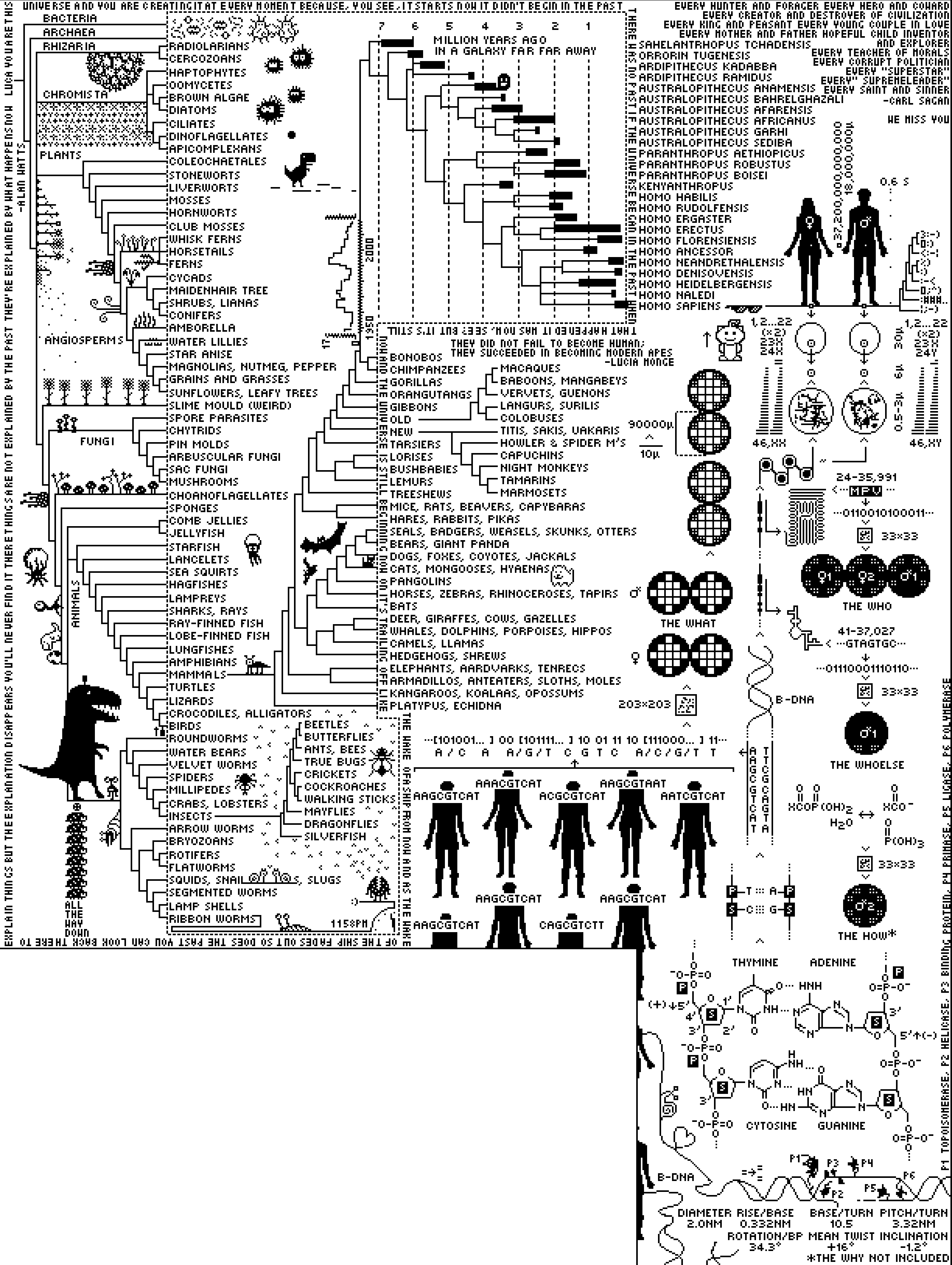
The next panel shows how the data is organized on the discs and how it's encoded. All amidst a story of dinosaur struggle.
The pixel stream on the discs contain metadata codes (it was fun to find the shorted codes that didn't appear in the sequence). For example, SNPs of each class (e.g. A/T) are indicated by unique sequence of bits.
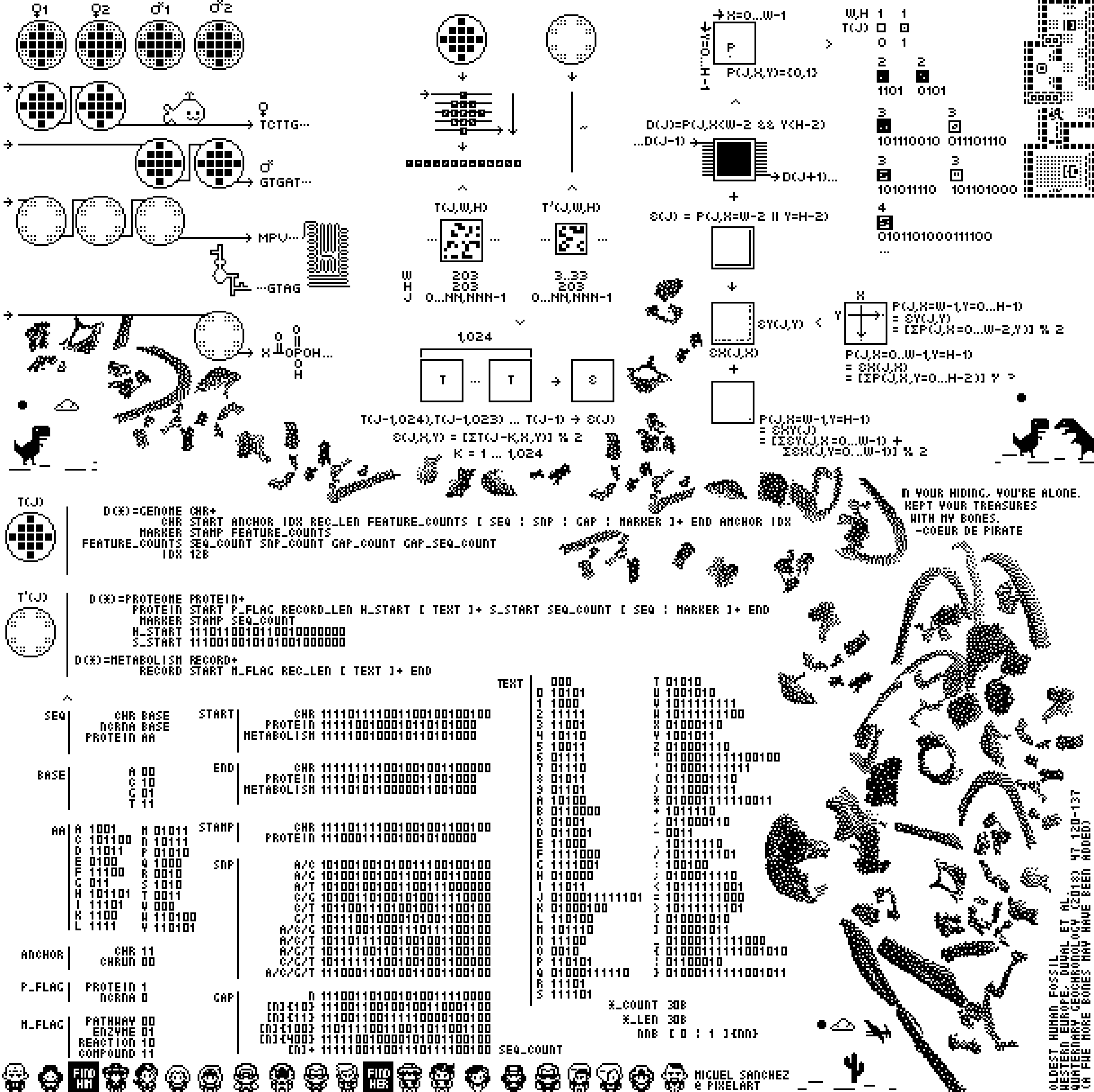
The genome is just a kind of recipe book for proteins. So the next panel explains how these are made up of amino acids. I mention that they fold but leave the details of the folding as an exercise to the audience. We can't be expected to figure out everything ourselves.
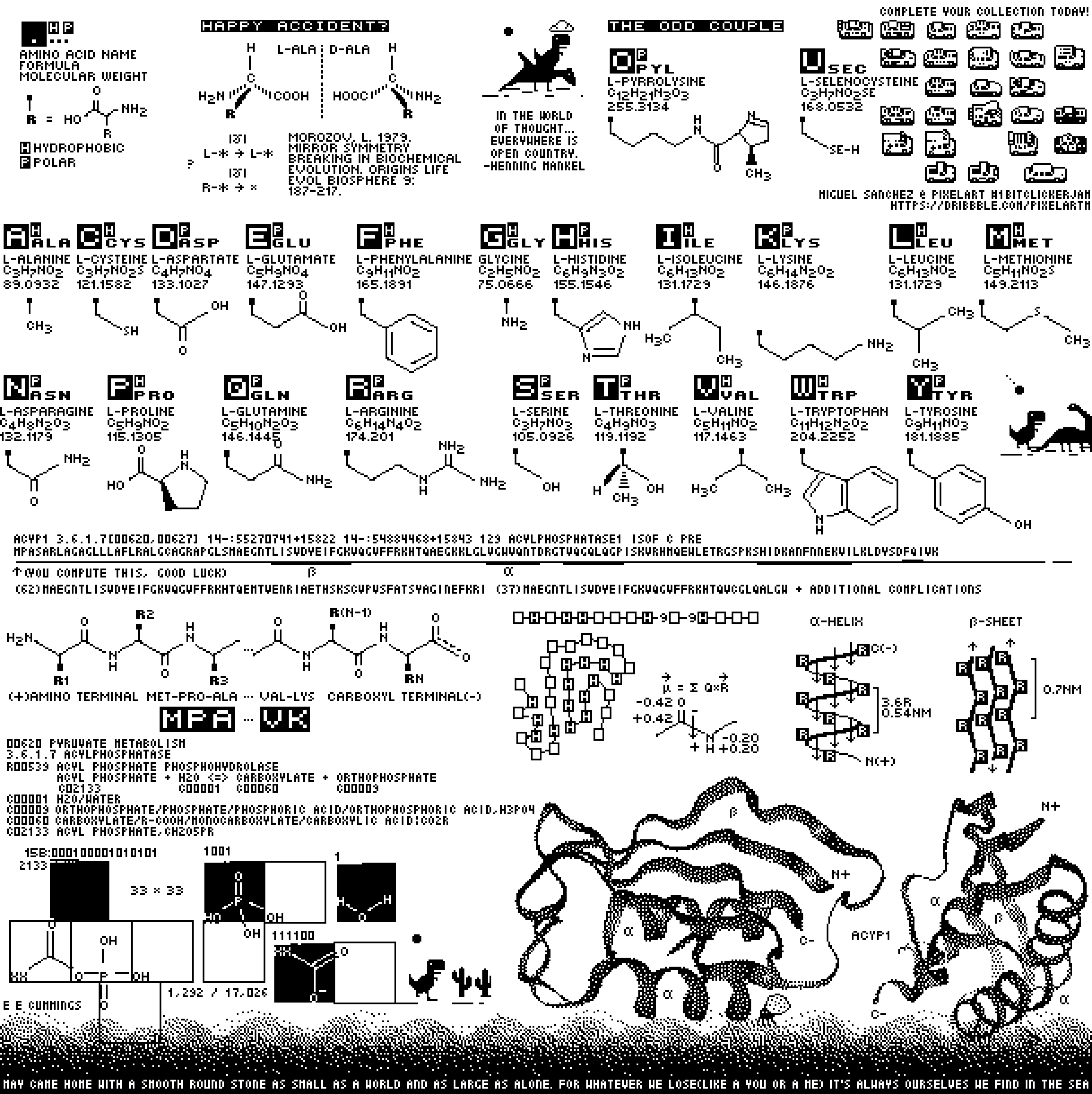
Next, to practise what you've learned, there is a little practical example of decoding a baby disc. Also the final panel of the dinosaur story appears here — many things are out of order on the discs and the reader is encouraged to piece them together. Yes, “death is very very long”.

Once you've decoded the discs, you can check your work against this table. The number of bits, bases and SNPs on each disc are shown.
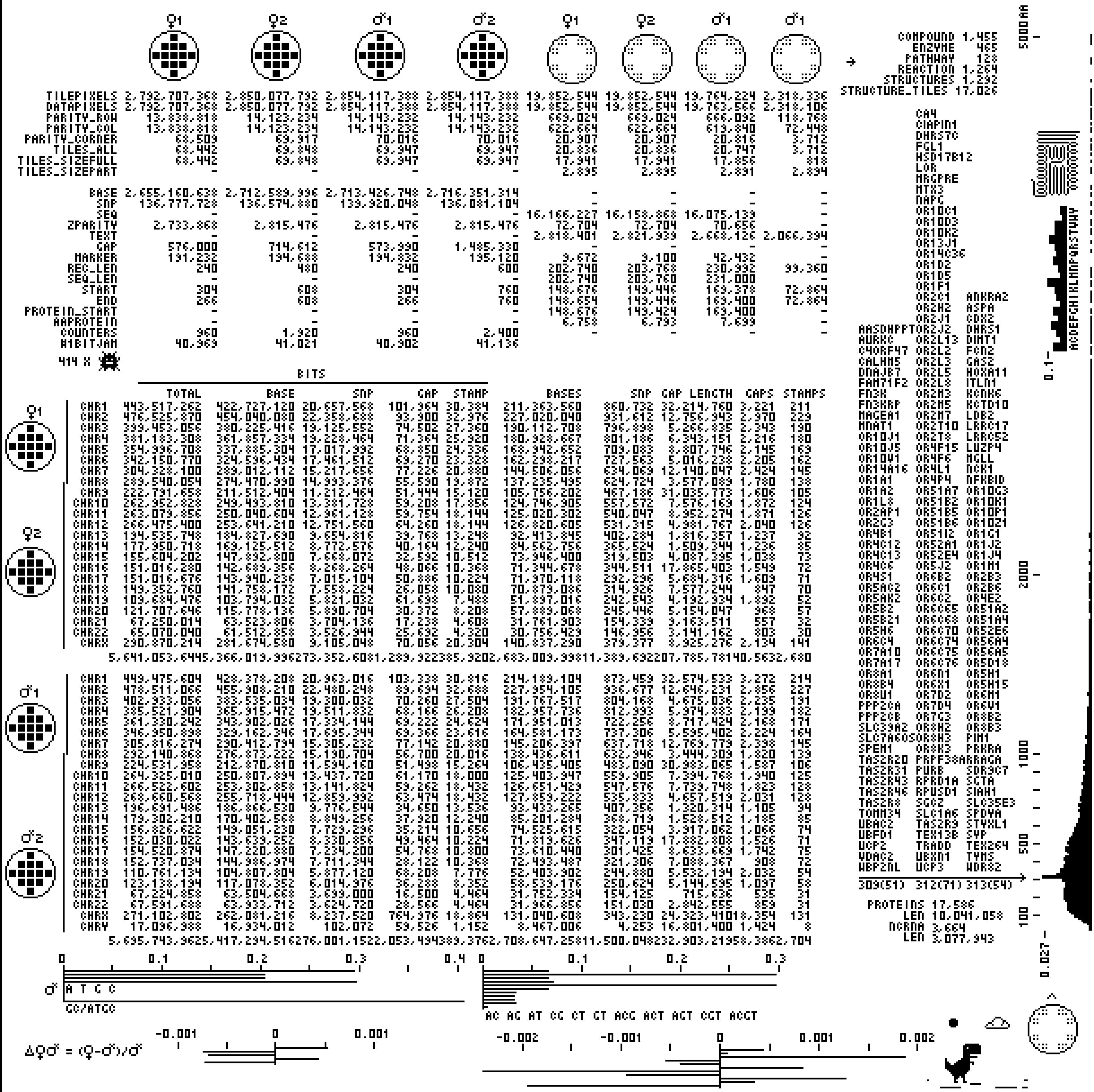
The instruction panels end in a few "making of" scenes and a list of credits.
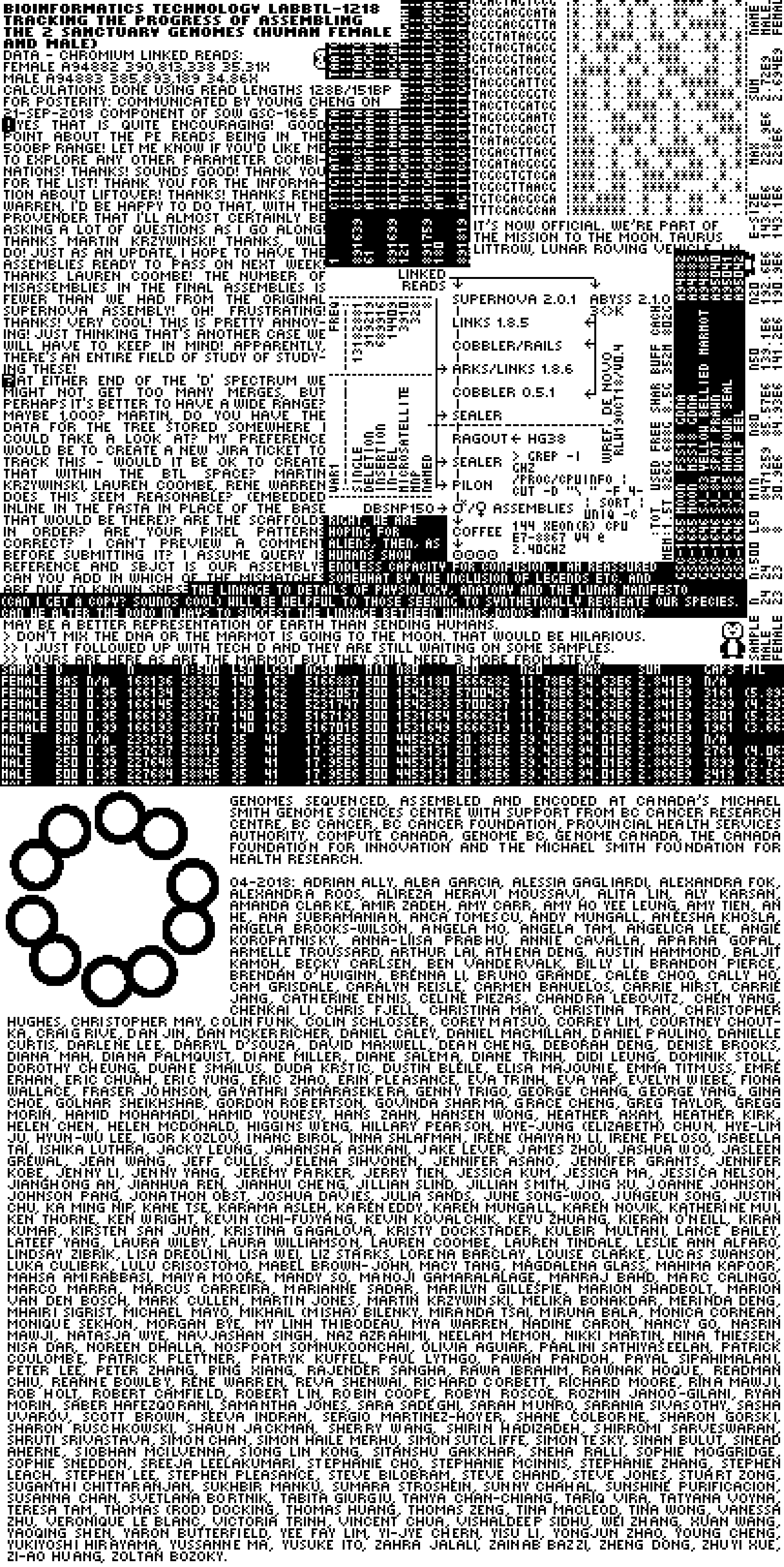
I took a photo of Steve Chand holding the flowcell before he loaded the sequencer. The map of the solar system answers the question “When did he load the sequencer?”
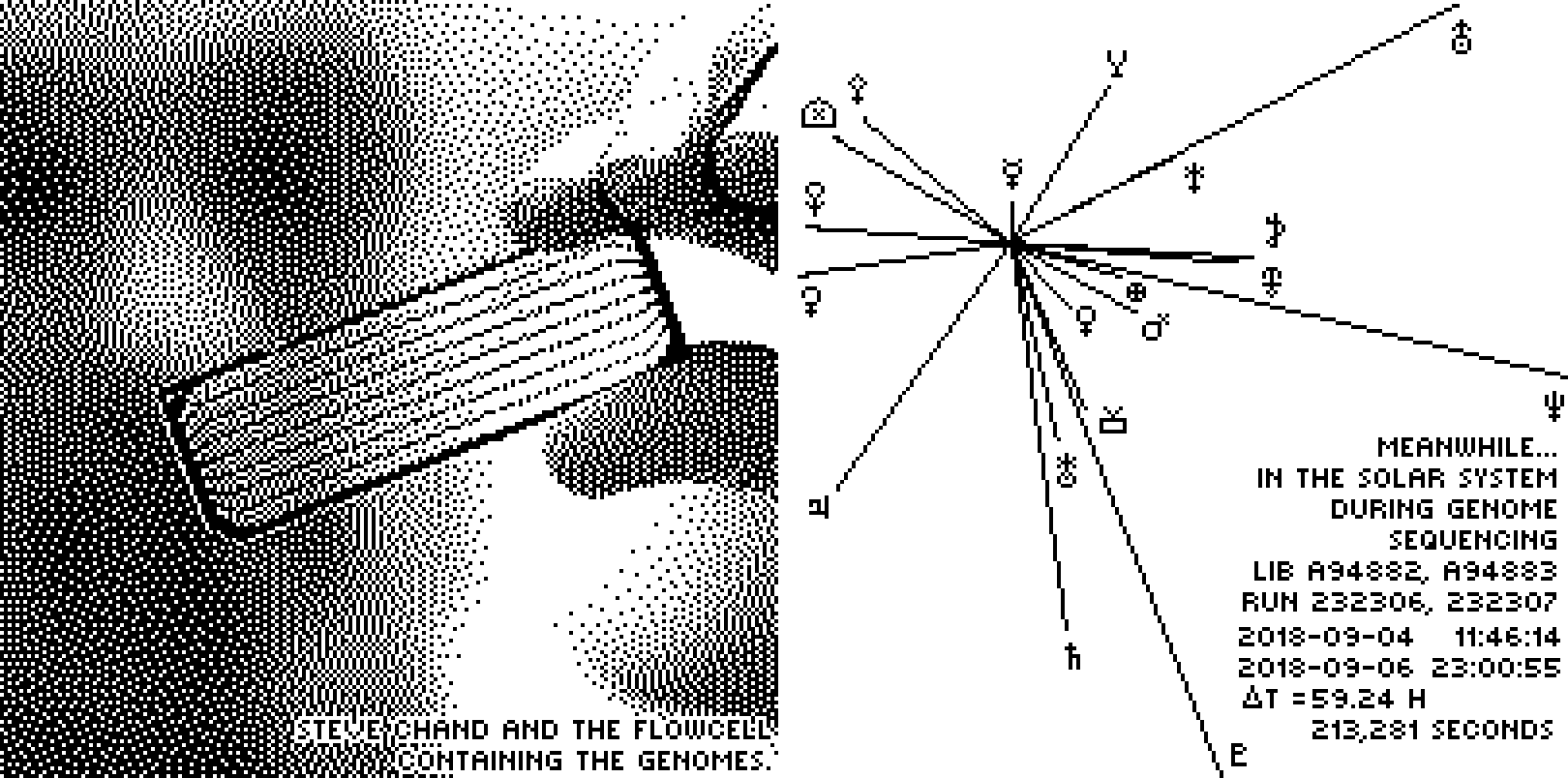
Our Center was founded by Michael Smith. The discs include a short dedication and a nostalgic photo of his office that I took shortly after he died.

We wouldn't be here without the seminal papers of Franklin and of Watson and Crick. Ok we would be here without them but we wouldn't know ourselves as well.
The Nature mansucripts are lovingly typeset here.
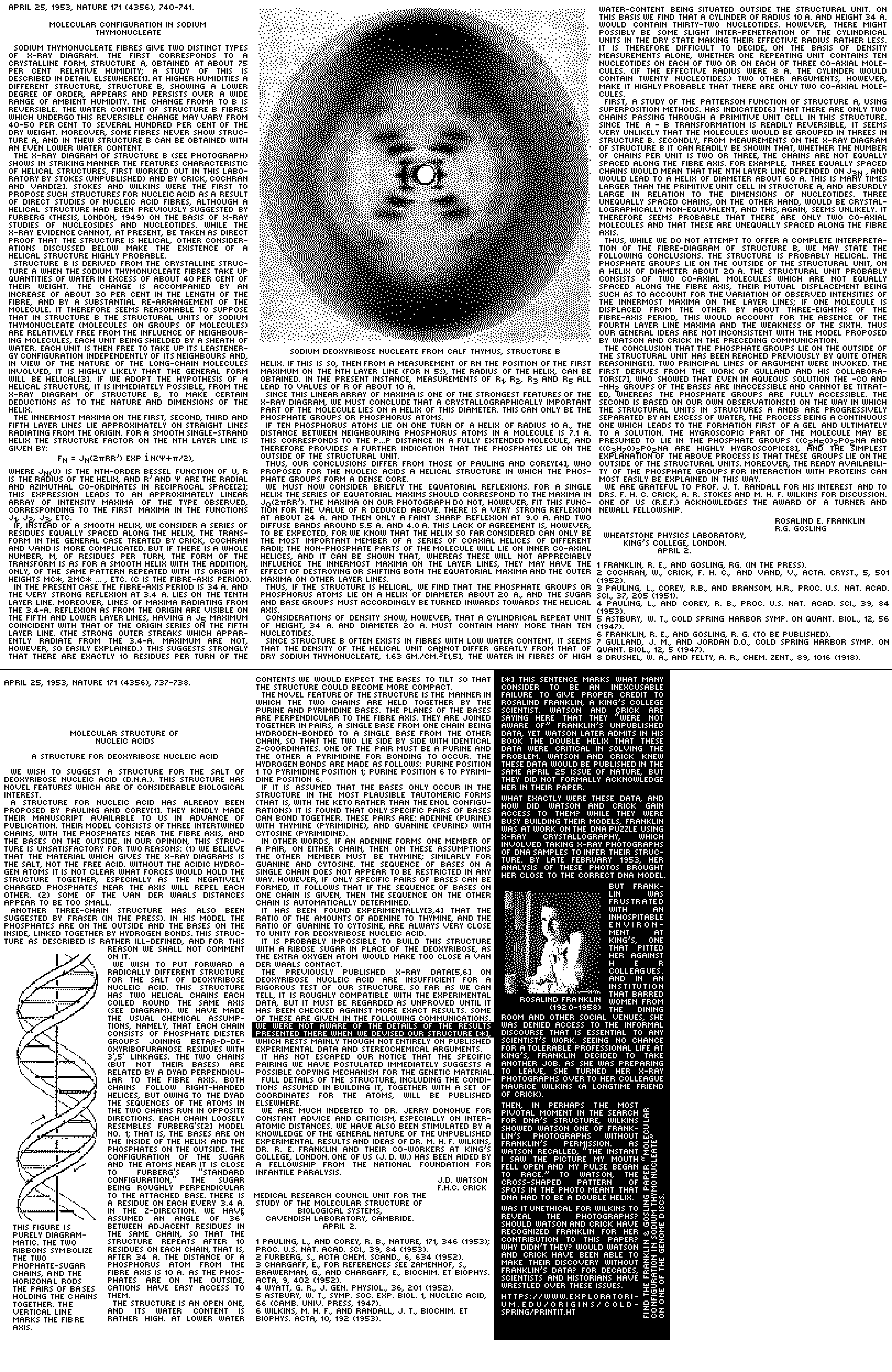
Nasa to send our human genome discs to the Moon
We'd like to say a ‘cosmic hello’: mathematics, culture, palaeontology, art and science, and ... human genomes.



Comparing classifier performance with baselines
All animals are equal, but some animals are more equal than others. —George Orwell
This month, we will illustrate the importance of establishing a baseline performance level.
Baselines are typically generated independently for each dataset using very simple models. Their role is to set the minimum level of acceptable performance and help with comparing relative improvements in performance of other models.

Unfortunately, baselines are often overlooked and, in the presence of a class imbalance5, must be established with care.
Megahed, F.M, Chen, Y-J., Jones-Farmer, A., Rigdon, S.E., Krzywinski, M. & Altman, N. (2024) Points of significance: Comparing classifier performance with baselines. Nat. Methods 20.
Happy 2024 π Day—
sunflowers ho!
Celebrate π Day (March 14th) and dig into the digit garden. Let's grow something.

How Analyzing Cosmic Nothing Might Explain Everything
Huge empty areas of the universe called voids could help solve the greatest mysteries in the cosmos.
My graphic accompanying How Analyzing Cosmic Nothing Might Explain Everything in the January 2024 issue of Scientific American depicts the entire Universe in a two-page spread — full of nothing.
The graphic uses the latest data from SDSS 12 and is an update to my Superclusters and Voids poster.
Michael Lemonick (editor) explains on the graphic:
“Regions of relatively empty space called cosmic voids are everywhere in the universe, and scientists believe studying their size, shape and spread across the cosmos could help them understand dark matter, dark energy and other big mysteries.
To use voids in this way, astronomers must map these regions in detail—a project that is just beginning.
Shown here are voids discovered by the Sloan Digital Sky Survey (SDSS), along with a selection of 16 previously named voids. Scientists expect voids to be evenly distributed throughout space—the lack of voids in some regions on the globe simply reflects SDSS’s sky coverage.”
voids
Sofia Contarini, Alice Pisani, Nico Hamaus, Federico Marulli Lauro Moscardini & Marco Baldi (2023) Cosmological Constraints from the BOSS DR12 Void Size Function Astrophysical Journal 953:46.
Nico Hamaus, Alice Pisani, Jin-Ah Choi, Guilhem Lavaux, Benjamin D. Wandelt & Jochen Weller (2020) Journal of Cosmology and Astroparticle Physics 2020:023.
Sloan Digital Sky Survey Data Release 12
Alan MacRobert (Sky & Telescope), Paulina Rowicka/Martin Krzywinski (revisions & Microscopium)
Hoffleit & Warren Jr. (1991) The Bright Star Catalog, 5th Revised Edition (Preliminary Version).
H0 = 67.4 km/(Mpc·s), Ωm = 0.315, Ωv = 0.685. Planck collaboration Planck 2018 results. VI. Cosmological parameters (2018).
constellation figures
stars
cosmology
Error in predictor variables
It is the mark of an educated mind to rest satisfied with the degree of precision that the nature of the subject admits and not to seek exactness where only an approximation is possible. —Aristotle
In regression, the predictors are (typically) assumed to have known values that are measured without error.
Practically, however, predictors are often measured with error. This has a profound (but predictable) effect on the estimates of relationships among variables – the so-called “error in variables” problem.

Error in measuring the predictors is often ignored. In this column, we discuss when ignoring this error is harmless and when it can lead to large bias that can leads us to miss important effects.
Altman, N. & Krzywinski, M. (2024) Points of significance: Error in predictor variables. Nat. Methods 20.
Background reading
Altman, N. & Krzywinski, M. (2015) Points of significance: Simple linear regression. Nat. Methods 12:999–1000.
Lever, J., Krzywinski, M. & Altman, N. (2016) Points of significance: Logistic regression. Nat. Methods 13:541–542 (2016).
Das, K., Krzywinski, M. & Altman, N. (2019) Points of significance: Quantile regression. Nat. Methods 16:451–452.
Convolutional neural networks
Nature uses only the longest threads to weave her patterns, so that each small piece of her fabric reveals the organization of the entire tapestry. – Richard Feynman
Following up on our Neural network primer column, this month we explore a different kind of network architecture: a convolutional network.
The convolutional network replaces the hidden layer of a fully connected network (FCN) with one or more filters (a kind of neuron that looks at the input within a narrow window).

Even through convolutional networks have far fewer neurons that an FCN, they can perform substantially better for certain kinds of problems, such as sequence motif detection.
Derry, A., Krzywinski, M & Altman, N. (2023) Points of significance: Convolutional neural networks. Nature Methods 20:1269–1270.
Background reading
Derry, A., Krzywinski, M. & Altman, N. (2023) Points of significance: Neural network primer. Nature Methods 20:165–167.
Lever, J., Krzywinski, M. & Altman, N. (2016) Points of significance: Logistic regression. Nature Methods 13:541–542.



